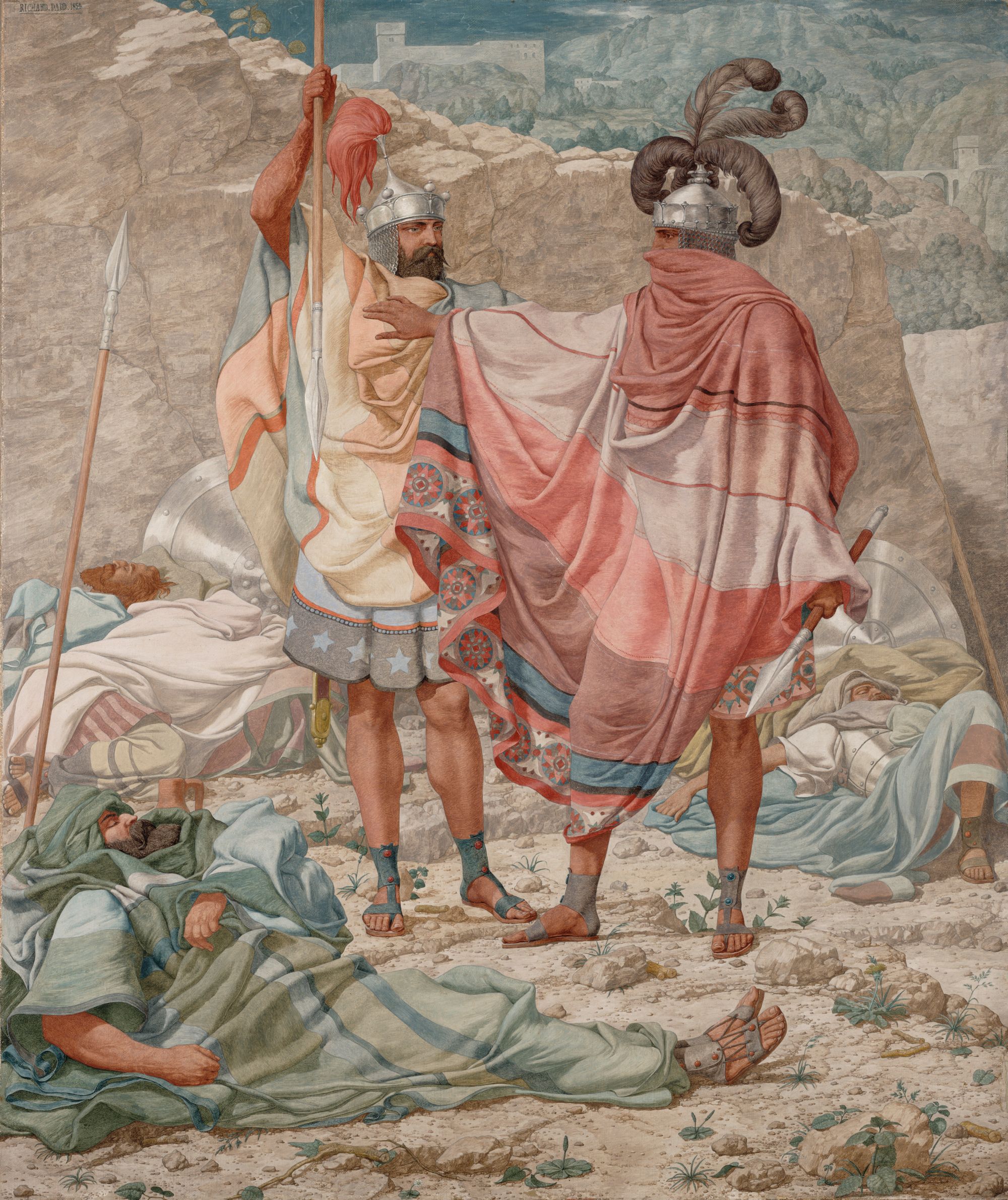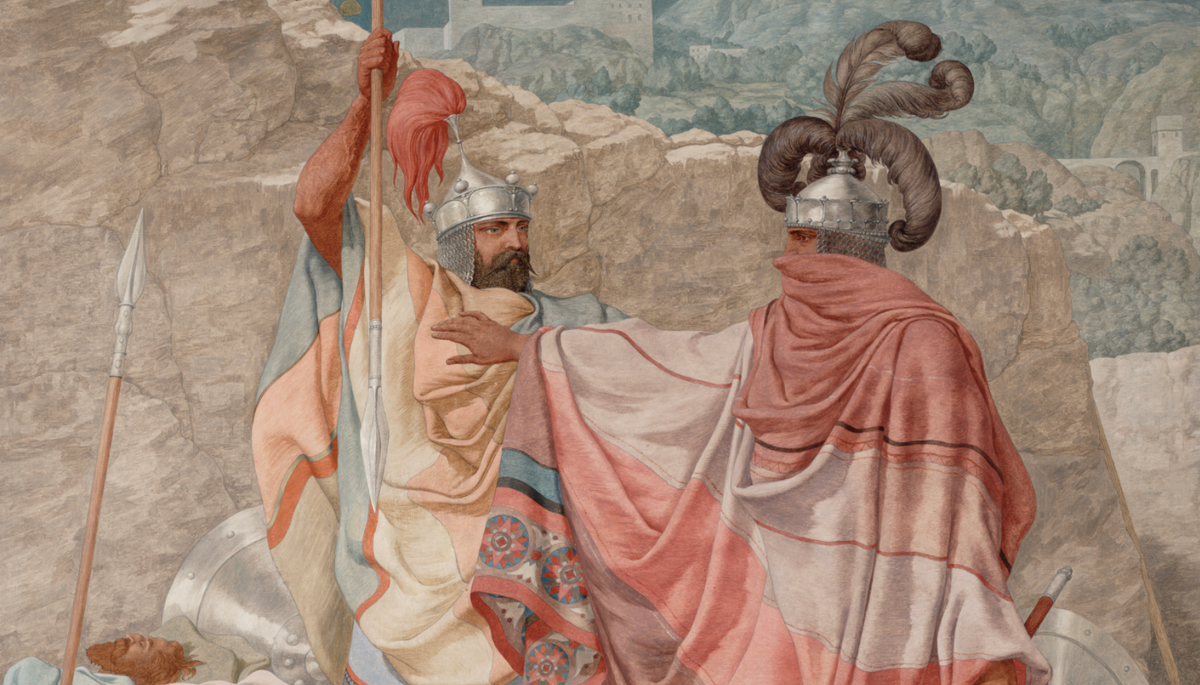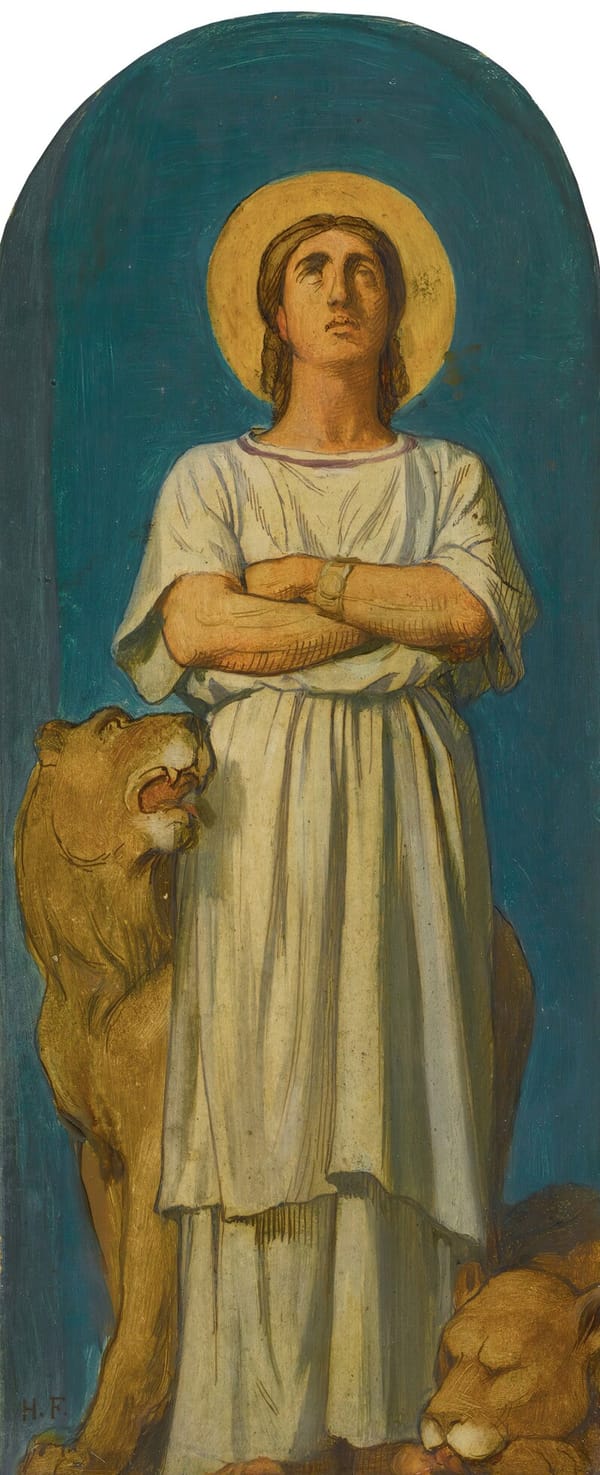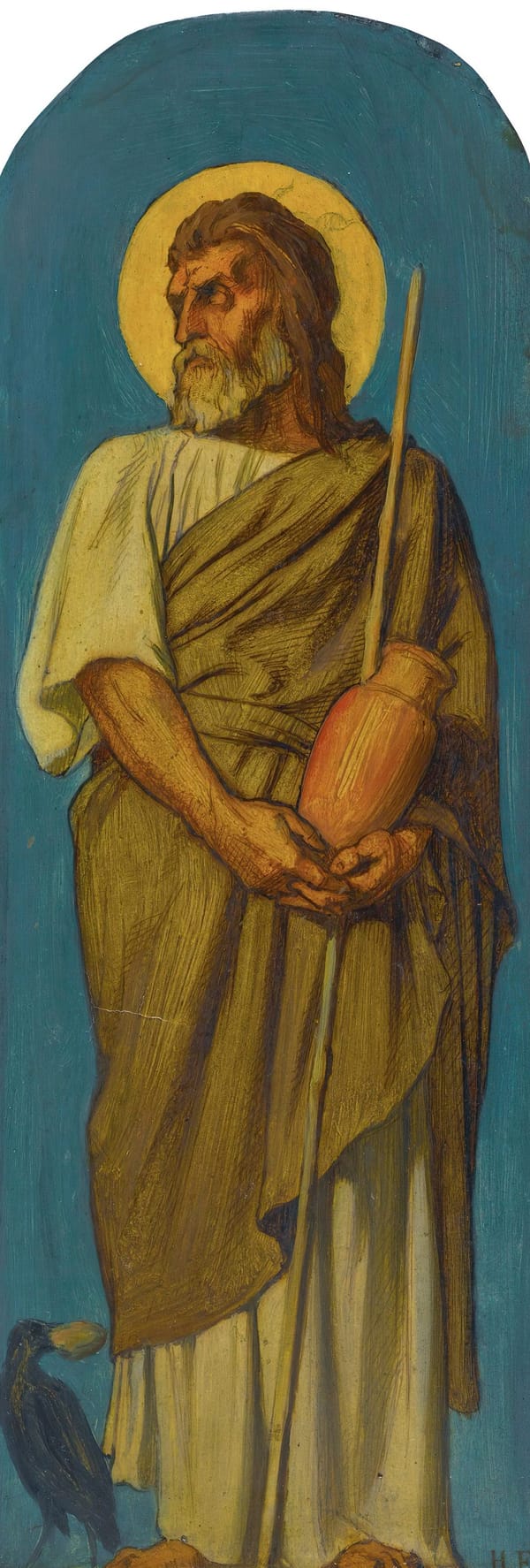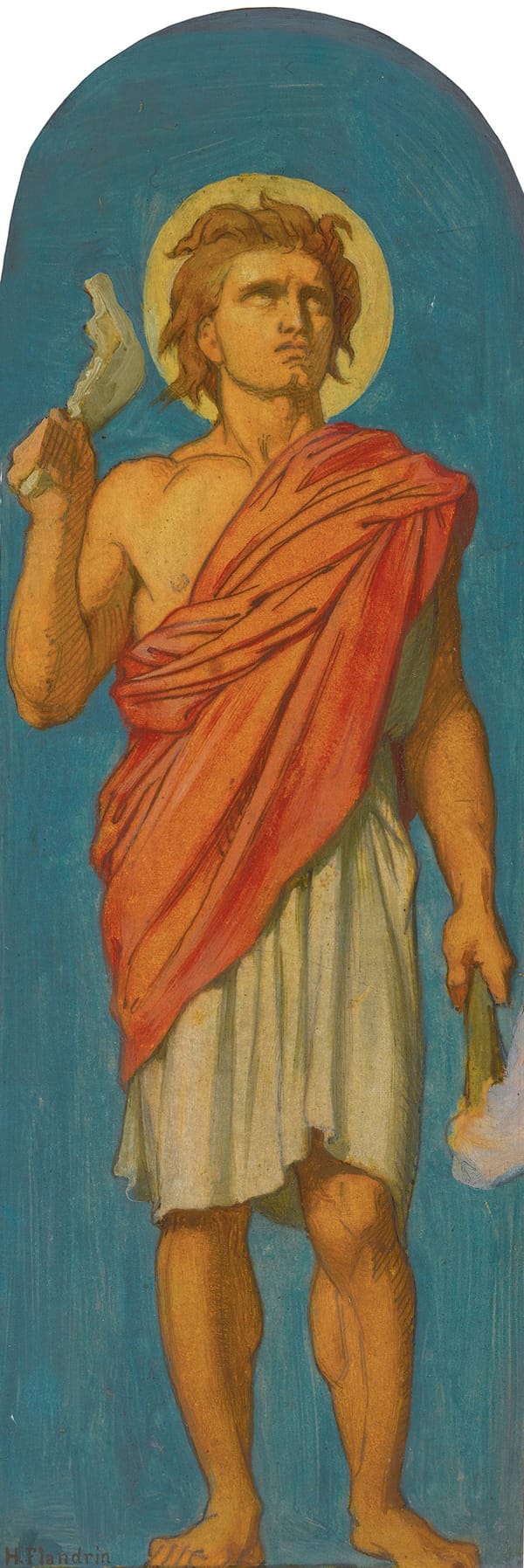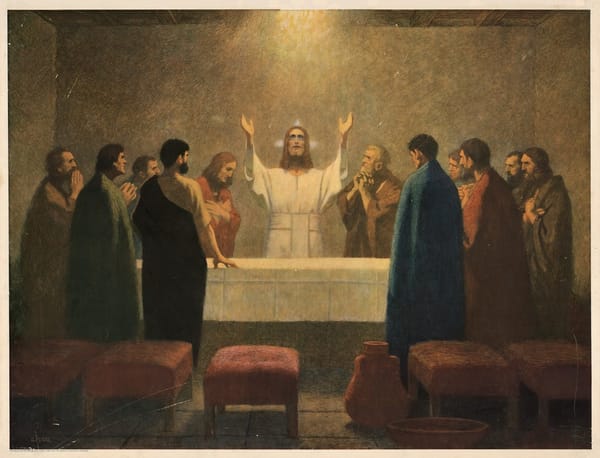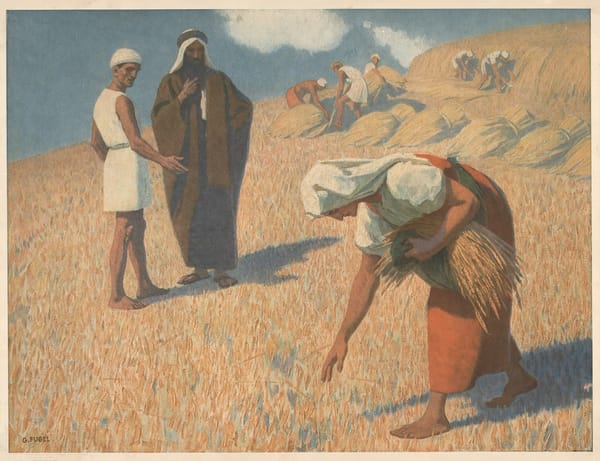King David exemplified mercy and self-restraint in preventing his companion Abishai from killing the sleeping King Saul (1 Samuel 26: 5-10). The simple, dramatic composition and statuesque main figures give this small, slightly eerie, moonlit scene a monumental quality. Yet the rhythm from the flowing movement and patterns of the garments enlivens the rocky desert setting and prevents the composition from being purely static.
Richard Dadd's lightened palette, fascination with detail, and interest in decorative patterning typify mid-1800s English painting. For authenticity, Dadd selected motifs from Egyptian wall reliefs, Roman sculpture, his own memories, and possibly his own travel sketches of the desert and cliffs near the Dead Sea.
To show this Old Testament subject rarely seen in Victorian painting, Dadd mixed historical events, modern passions, and perhaps personal associations. After delusions led him to kill his father in 1843, he continued making art while confined to a mental hospital. His doctor may even have suggested this subject, thinking that Dadd might cultivate David's moral virtues as an antidote to his own murderous compulsions.
Free Downloads Below
Hi-Res
1200px
800px
